The most common five kinds of coffee beans in coffee shops introduce what coffee beans are the most classic

With the promotion and development of the coffee market, more and more people like coffee. At the same time, with the promotion of hand-made coffee, individual coffee is becoming more and more well-known. Many beginner lovers of hand-brewed coffee do not know how to choose a rich variety of individual coffee beans. In front street coffee, when baristas recommend individual coffee beans to guests, they are simply defined into five categories: more floral and fruity aroma, more fermented, more balanced flavor, wine flavor, and mellow thickness. The classification of Qianjie baristas is to inquire about the taste of the guests according to the special flavor of the producing area, and then recommend it according to the needs of the guests. So what is the flavor of the producing area? Where do the flavor characteristics just described come from? Don't worry, in front of the street, let's talk about how beginners choose their own individual coffee beans.

What is the flavor of producing area?
As a crop, coffee is affected by many factors, such as altitude, climate, soil, planting technology, raw bean treatment, and so on, and coffee is only a general term, in which a variety of varieties are subdivided. The single coffee beans most commonly used for daily consumption belong to Arabica species, which are also subdivided into detailed types of coffee, such as iron pickup, bourbon and so on. This will affect the flavor of coffee beans from the source, that is, the flavor of the producing area of Qianjie coffee. Qianjie, which is more floral and fruity, is recommended to try coffee beans from Ethiopia in Africa.
The most famous producing area is Yega Xuefei. Yega's citrus flavor and light floral fragrance have become coffee beans for many partners who have just come into contact with individual coffee. What is interesting is that Yega Xuefei has a coffee species named "Kurume", which refers to the coffee varieties in this region after a long period of regional climate, soil and other environments. This also fully represents the flavor of Yejia Xuefei. The Yega Xuefei production area mostly uses the water washing treatment method to reflect the bright acidity of the Yejia Xuefei coffee beans. in recent years, the coffee beans in the Yejia Xuefei producing area like to use the sun treatment method. Qianjie Coffee believes that the sun-treated coffee beans can reflect more sweetness and the acidity of ripe berries.
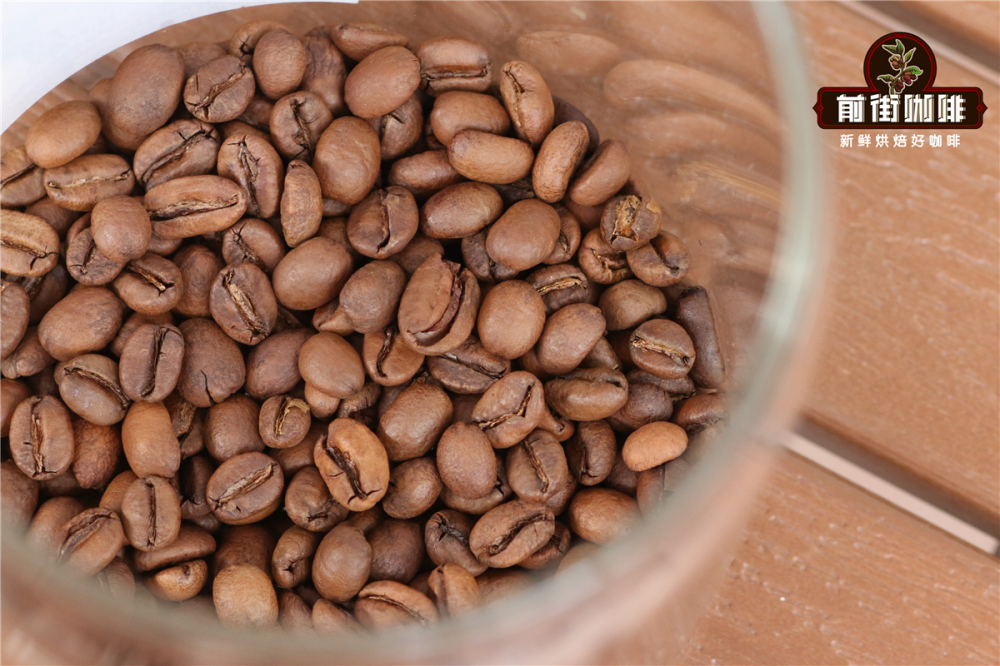
Qianjie Coffee-Ethiopian Red Cherry Sun
Producing area: Yega Xuefei, Ethiopia
Variety: Ethiopian native species
Altitude: 1800-2200m
Treatment: sun treatment
Cooking flavor: lemon, licorice, citrus, berry, sweet orange, the overall sweetness is high, Huigan has the flavor of caramel and cream, and the aftertaste has the aroma of black tea.
The variety of this coffee bean is native to Ethiopia, and most Ethiopian coffee varieties are named after this name, in fact, because there are so many varieties, it is like a natural gene pool of coffee, on the one hand, there are many varieties, and it is difficult to identify and classify them. On the one hand, the Ethiopian government is unwilling and unable to disclose information about these varieties for reasons of protected varieties. However, Qianjie Coffee found that at the COE contest held in Ethiopia this year, Ethiopian beans also began to have different varieties of names, all named after numbers. Red Cherry Project
The red cherry actually refers to the local cooperative red cherry project, launched by Dutch trader Trabocca and local farmers to improve the quality of coffee on small-scale farms and increase farmers' income. To pick fully ripe coffee fruit, we should not only pick the fruit with high maturity of full red, but also harvest it by hand, but this is only the most basic requirement. There are also corresponding requirements for the treatment of coffee beans.

The red cherry project is also a reinforcing method, which makes the farm pay more attention to the process of planting and selecting beans, and the prices of these good varieties of coffee are also relatively high. the main producing areas are Yegasheffi, Sidamo, Penga Forest, Lekanti, Kenbata, Irubabo, Hara, Lim and so on. These are unique flavors and can fully show the flavor of Ethiopian coffee. But in fact, today's boutique coffee is produced in the way of the red cherry project, but the unique term of red cherry coffee belongs to Ethiopia, and the red cherry coffee will be printed with Trabocca on the sack.
Sun treatment
Sun treatment is also known as natural treatment, hand-harvested high-sugar coffee cherries, placed on the viaduct or open space exposure, the exposure process should be timely stirring to avoid uneven drying or excessive fermentation. Dry completely after 2-4 weeks until the water content reaches 12%. Use a sheller to remove the pulp and peel.

The more fermented Qianjie coffee recommends Costa Rican coffee beans.
The coffee from the famous Tarazhu region of Costa Rica has a smooth taste, high acidity, hard and full beans and rich aroma. Originally, Costa Rica mostly used washing method to treat coffee, but in recent years, there has been an alternative coffee bean treatment method Mile, also known as honey treatment (Honey coffee). This treatment improves the Brazilian half-sun method to increase the sweetness. The key point is to retain the pectin layer on the coffee beans as far as possible. After peeling, the sticky coffee beans are exposed on the viaduct and air-dried for about one to two weeks. During this period, the coffee beans should be reacted every hour to make the coffee beans evenly dry, so that the coffee beans can fully absorb the sugar in the pectin. Qianjie believes that the coffee beans treated with honey have a better flavor, and the sour taste is balanced with sweet taste. And the same sun method because of the sun, the aroma of coffee beans will also be magnified, mellow flavor, the disadvantage of this treatment is that the risk is very high, easy to mildew and corruption.

Producing area: Tarazhu, Costa Rica
Manor: Milasu Manor
Altitude: 1700m
Treatment: raisin rice way out
Varieties: Rosa, ET47, SL28, MACIO
Cooking flavor: the fragrance of jasmine, the fermented aroma of raisins, soft acidity, the finish of almonds, obvious sweetness.
Raisin honey treatment
Milasu rose summer blend uses dried grape honey treatment, retaining 100% pectin and zero water treatment. It increases the difficulty of the honey processing method, which requires strict control of time. On the day of picking coffee berries, pour the harvested coffee berries into a large trough, and the ripe and full fruits will sink to the bottom of the water; underdeveloped or overripe fruits will surface, and these floating beans need to be removed. Put the screened coffee fruit on an elevated bed to dry for at least three days, then remove the pericarp and retain the pectin before drying. At this stage, climate factors are the key to the success of honey treatment. In the drying process, keep turning these coffee fruits to make the drying uniform, but to grasp the frequency of turning, to dry slowly to ensure that the coffee is fermented, but not so slow that excessive fermentation occurs. Qianjie believes that this sweet raisin honey treatment makes the coffee flavor have the taste of white wine and balanced acidity, and the fermented aroma is also rich.
If the flavor is more balanced, you can try the coffee beans from Brazil.
The coffee flavor of each coffee-producing country of American bean is outstanding. Here we share the flavor of coffee from the more common producing areas. First of all, Brazil, the first producing country, as the first country in the world, its flavor has obvious recognition. Brazil is mostly bourbon-grown coffee, widely cultivated on plateau flatlands, and large-scale mechanized planting management, which makes the flavor and quality consistent. Qianjie believes that Brazilian coffee has low acidity, high alcohol thickness, and often has chocolate and nut flavors.
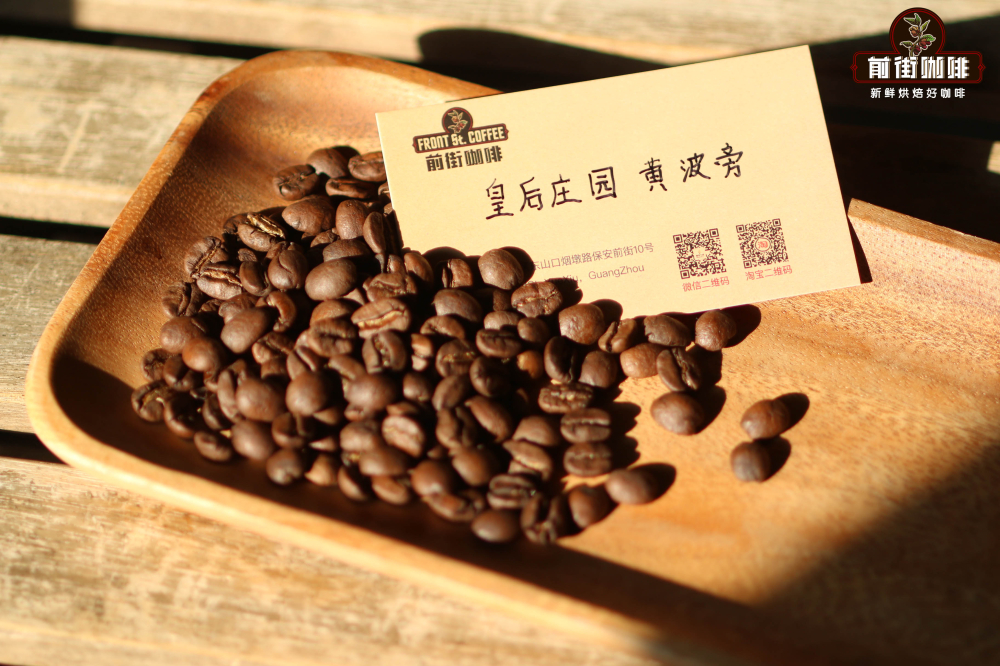
Qianjie Coffee-Queen Manor of Brazil
Producing area: Morgiana
Variety: yellow bourbon
Altitude: 1400-1900m
Treatment: half-sun treatment
Full-boiled nuts, dark chocolate flavor, fermented fruit, with obvious sweetness, with a hint of lemon aroma, the overall feeling is more round.
Half-sun treatment
Half-sun is to remove the peel and pulp of coffee berries, which can control the degree of fermentation of pectin coffee beans after peeling and peeling. The traditional sun is the sun with peel and pulp, so the fermentation degree of pectin can not be seen. The half-sun treatment is between the sun treatment and the water washing treatment, but there is no "pool fermentation and water washing" process of the water washing treatment, but it is directly exposed to the sun. Although the method seems to be similar, without the step of fermentation, the flavor of coffee beans is completely different. Half-sun treatment in the process of removing the pulp of coffee peel, the ripe pulp will be easily removed, and the immature green fruit peel is not easy to deal with, so a second screening can be carried out to filter the immature fruit and unify the maturity of the coffee fruit. Compared with the sun drying method, Qianjie believes that the cleanliness and maturity of the coffee beans will be improved, resulting in a more uniform taste of coffee. If you have the characteristics of wine, you can try coffee beans from Honduras.
Honduras produces two kinds of coffee of very good quality, which are highly respected by coffee lovers. One is the "Highland Coffee High Grown", which is grown at an altitude of 1000 Muhammad 1500 Michael, and the other is the "selected Highland Coffee Strictily High Grown", which represents the highest level of Honduran coffee, which is grown at an altitude of 1500 Murray 200 meters. Most Honduran coffee is exported to the United States and Germany. Qianjie has compared the coffee beans of these Chinese and American countries, they all have a common flavor characteristic: flower and fruit aroma and soft fruit juice. Although the flavor of Honduran coffee will be similar to that of neighboring countries, Honduran coffee can feel the elements of exotic spices in the aroma, the latter part will be full-bodied with nut chocolate, and the overall performance will be balanced and layered. Honduran coffee beans were often washed before the emergence of barrel fermentation. The Honduran coffee bean wine barrel fermentation method is inspired by the wine fermentation process. During the coffee fermentation process, the barrel can let a very small amount of air through the barrel wall and seep into the barrel to make the coffee beans have a moderate oxidation. The proper amount of oxygen also accelerates the fermentation of coffee.
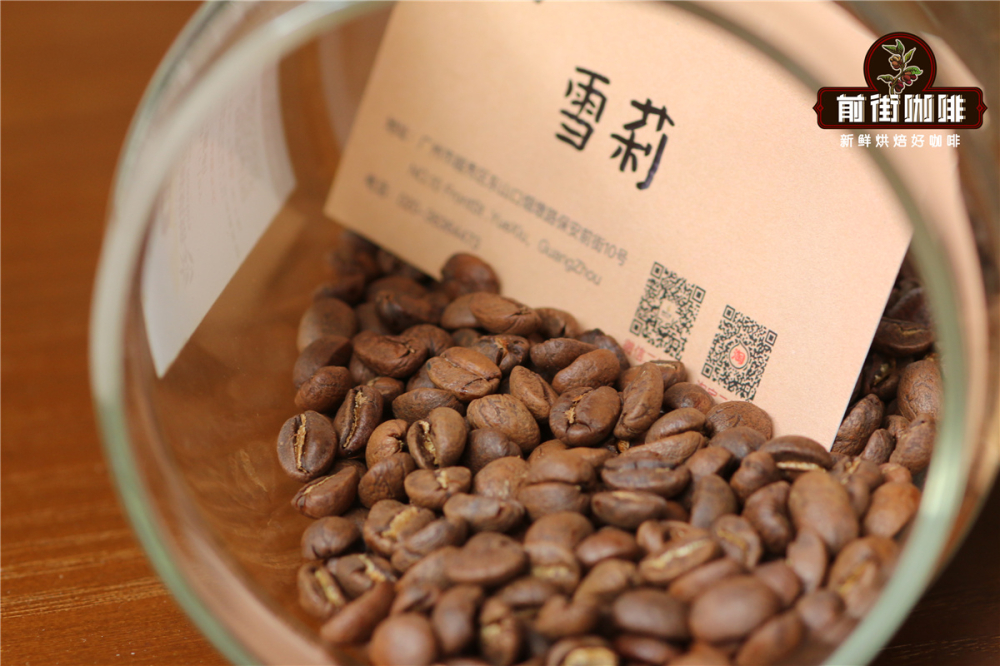
Front Street Coffee-Shirley of Moca Manor in Honduras
Producing area: Masaguara
Manor: Moca Manor
Altitude: 1500-1700m
Variety: Kaddura, Kaduai, Pacas
Treatment: fine washing + whisky sherry barrel fermentation
Fine washing + whisky sherry barrel fermentation
Shirley on the front street uses delicate washing plus whisky sherry buckets. The freshly picked coffee fruit is carefully washed, then put into a barrel of sherry / rum, fermented at a low temperature for 30-40 days (about 15-20 ℃), and then dried in the shade.
If you have a higher thickness, you can try Indonesian coffee beans.
Asian beans are the most common in Indonesia. When it comes to Indonesian beans, the first is the bitter and fragrant Mantenin coffee. Indonesia's island monsoon climate and fertile volcanic soil are very suitable for the growth of coffee, but for historical reasons, leaf rust has swept Indonesia's iron pickup, and Indonesia has also introduced disease-resistant varieties such as Robusta, Timo, Katim and so on. But the one with the best flavor is the Sumatran iron pickup. Due to the local wet and rainy reasons, Indonesia uses wet planing treatment, coupled with Indonesia Mantenin's biggest market is Japan (the Japanese like Mantenin's mellow bitterness), which also creates the flavor of Indonesian producing areas, such as herbs, black cocoa, nuts, spices, muddy, mellow body and so on.
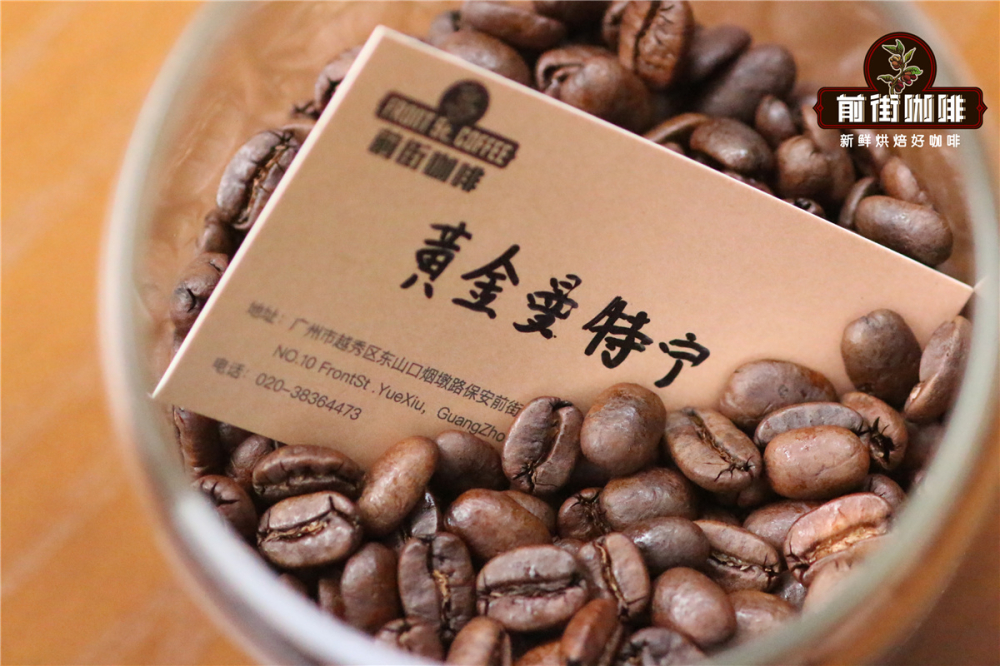
Qianjie Coffee-Indonesia Gold Manning
Producing area: Sumatra, Indonesia
Altitude: 1100-1600m
Variety: Ateng
Treatment method: wet planing method
Cooking flavor: changeable layers, mellow and clean, high sense of balance, rich nutty and caramel aromas, chocolate aromas and a long finish.
Manning, the gold of Qianjie Coffee, comes from the famous Pwani Coffe Company Coffee Company, or PWN, in the Indonesian coffee industry. Japanese companies are registered as "Gold Top Mandheling", that is, the tripod gold Manning. In fact, there is little difference in flavor performance between the two, but due to different brands and different marketing strategies, it is also possible to lead to a change in public opinion, so it depends on which of the two gold manning is better. PWN is the first company to export gold manning to Japan. Wet planing method
As the local weather is often dominated by Rain Water, with continuous typhoons, it is impossible to achieve the good weather needed for the sun, and the local economy is not good, so it is also impossible to use the more expensive way of washing. For various reasons, the wet planing method with local characteristics is derived (the wet planing method is to dry the parchment in the sun for 2-3 days with a water content of 20-24% to remove the parchment during the ordinary washing process.
The ultra-fast speed of wet planing also causes Manning to have a higher defect rate, and Golden Manning can avoid this shortcoming very well. The specification of Gold Manning is more than 19 mesh, and there are less than 3 defective beans (300g raw bean samples). It belongs to the highest grade G1, the color is dark green, and it is a neat flat bean.
Qianjie coffee brewing experience Qianjie in the brewing sun red cherry coffee beans, Shirley coffee beans, rose summer mixed coffee beans using V60 filter cup brewing.
Degree of grinding: BG6m (pass rate of No. 20 screen is 80%)
Water temperature: 90ml, 91 degrees.
Gouache ratio: 1:15
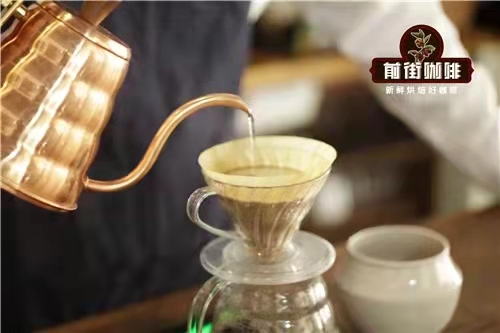
Qianjie coffee is extracted by stages, also known as three-stage brewing: steaming with 30 grams of water for 30 seconds, injecting water around a circle to 125 grams for stages, continuing to inject water to 225 grams when the water level is about to be exposed to the powder bed, removing the filter cup when the water level is about to be exposed to the powder bed, (steaming starting timing) the extraction time is 1 "3955"-2 "3900".
Qianjie Coffee is brewed with Kono filter cup in Brazilian Queen's Manor Coffee beans and Golden Manning Coffee beans.
Degree of grinding: BG6w (75% pass rate of No. 20 screen)
Water temperature: 88-89 degrees
Gouache ratio: 1:15
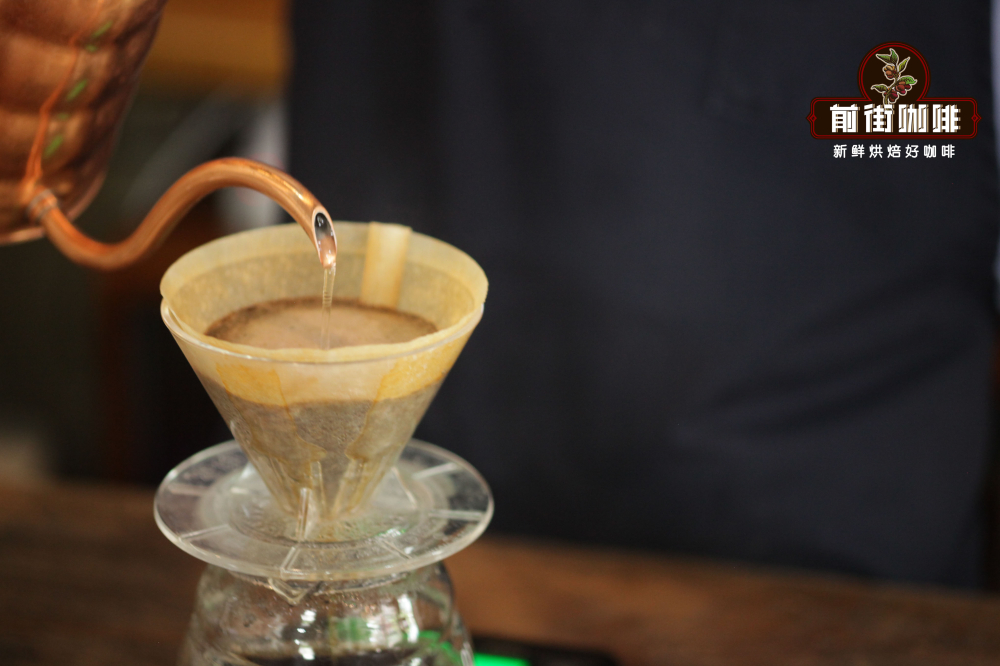
Qianjie coffee is extracted by stages, also known as three-stage brewing: steaming with 30 grams of water for 30 seconds, injecting water around a circle to 125 grams for stages, continuing to inject water to 225 grams when the water level is about to be exposed to the powder bed, removing the filter cup when the water level is about to be exposed to the powder bed, (steaming starting timing) the extraction time is 2 grams 39th 05 "- 2 grams 3915". With regard to the degree of grinding, Qianjie is determined by screening this method, according to the grinding advice provided by the American Fine Coffee Association SCA for hand-brewed coffee, Qianjie is combined with the actual operation verification. If you don't have a sieve at home, Qianjie Coffee suggests observing the speed of the water to judge that if the flow is too fast, it is coarse, and if the flow is too slow, it is fine.
Professional coffee knowledge exchange more coffee bean information please follow the coffee workshop (Wechat official account cafe_style)
For more knowledge of boutique coffee, please add Qianjie Coffee personal WeChat account: kaixinguoguo0925
Important Notice :
前街咖啡 FrontStreet Coffee has moved to new addredd:
FrontStreet Coffee Address: 315,Donghua East Road,GuangZhou
Tel:020 38364473
- Prev
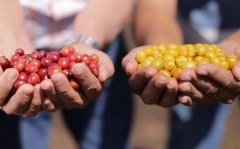
What is pink bourbon? Where is the producing place of pink bourbon with low production?
Professional coffee knowledge exchange more coffee bean information please follow the coffee workshop (Wechat official account cafe_style) pink bourbon, as the name implies, its coffee cherries are romantic pink when ripe, but it is very difficult to maintain this romance, sometimes we will harvest some orange bourbon, that is because the color of coffee fruit is ultimately caused by recessive genes in pollen grains.
- Next
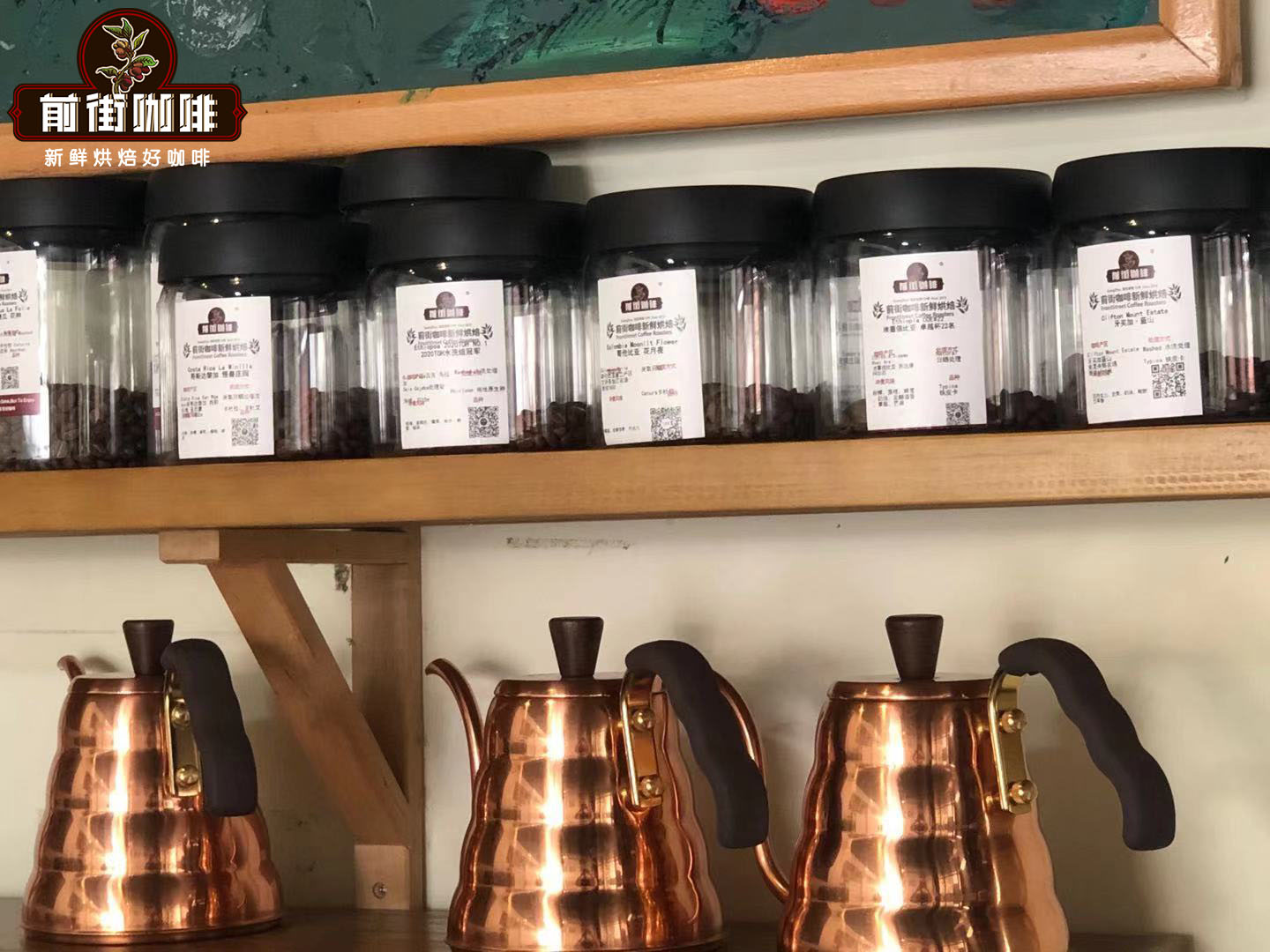
What is a single coffee bean? The difference between a single coffee bean and a blended bean is the best single coffee bean ranking recommendation
Professional coffee knowledge exchange More coffee bean information Please pay attention to coffee workshop (Weixin Official Accounts cafe_style) Single coffee beans, blended coffee beans, are you still confused about beans? Let's learn together with the editor!● When buying coffee beans, the boss asked me whether I liked single beans or blended beans. What was the difference between the two? I'm ready
Related
- Detailed explanation of Jadeite planting Land in Panamanian Jadeite Manor introduction to the grading system of Jadeite competitive bidding, Red bid, Green bid and Rose Summer
- Story of Coffee planting in Brenka region of Costa Rica Stonehenge Manor anaerobic heavy honey treatment of flavor mouth
- What's on the barrel of Blue Mountain Coffee beans?
- Can American coffee also pull flowers? How to use hot American style to pull out a good-looking pattern?
- Can you make a cold extract with coffee beans? What is the right proportion for cold-extracted coffee formula?
- Indonesian PWN Gold Mandrine Coffee Origin Features Flavor How to Chong? Mandolin coffee is American.
- A brief introduction to the flavor characteristics of Brazilian yellow bourbon coffee beans
- What is the effect of different water quality on the flavor of cold-extracted coffee? What kind of water is best for brewing coffee?
- Why do you think of Rose Summer whenever you mention Panamanian coffee?
- Introduction to the characteristics of authentic blue mountain coffee bean producing areas? What is the CIB Coffee Authority in Jamaica?

